
Molybdenum is widely used in many fields such as steel, chemical industry, military, electronics, computer, biomedicine, agriculture, etc. It not only improves the strength and corrosion resistance of materials, but also plays an irreplaceable role in high-tech and defense industries. With the development of science and technology, the demand for molybdenum is increasing, the reserves of molybdenite resources are decreasing sharply, and the shortage of molybdenum ore resources has become an indisputable fact. The selection of molybdenum ore resources that are difficult to select and difficult to select has gradually attracted attention. Promoting the beneficiation technology of difficult-to-select molybdenum ore resources and improving the utilization efficiency of this part of resources are of great significance to supporting the development of molybdenum mines and related industries. The following article will introduce you to some difficult-to-select molybdenum ore resources and their beneficiation technology progress.
At present, there are more than 30 known molybdenum minerals, among which molybdenite is the most widely distributed and the most important molybdenum mineral in industry. According to relevant statistics, 99% of the world's molybdenum production is obtained from easy-to-select molybdenum ore. However, easy-to-select molybdenum ores have been over-exploited, and there are a large number of various difficult-to-select molybdenum ores in the world. It is difficult to improve the beneficiation index by using the commonly used flotation method, and the grade of the obtained molybdenum concentrate is not high. The low quality of molybdenum concentrate products and the low utilization rate of molybdenum ore resources are two major problems that need to be urgently solved in molybdenum ore selection.
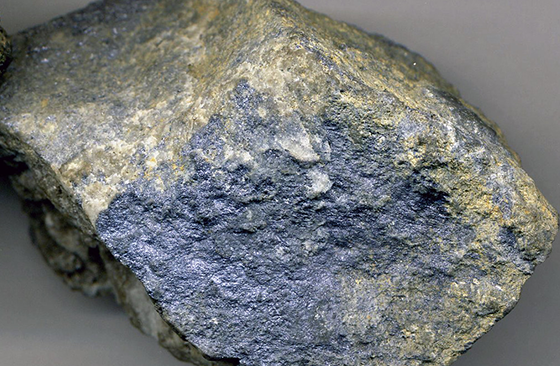
Common refractory molybdenum ores can be divided into: high oxidation rate molybdenum ore, talc-containing molybdenum ore or talc-containing copper-molybdenum ore, carbon-containing, carbonaceous shale and organic molybdenum-carbon molybdenum ore or polymetallic, impregnated fine or ultrafine molybdenum ore, and complex structure molybdenum ore, etc. Since the molybdenum content in these ores exceeds 0.08%, which has exceeded the industrial grade of molybdenum, and even the molybdenum content in some ores exceeds 0.1%, and these ores are also accompanied by valuable metals such as lead, gold, and silver, they have certain development value and comprehensive utilization value.
Talc-type molybdenum ore refers to molybdenite containing a certain amount of talc. Since the floatability of talc is very similar to that of molybdenite, these two minerals can be called iso-floatable minerals, so it is difficult for traditional flotation methods to effectively separate them. The presence of talc not only interferes with the recovery of molybdenite, but also affects the quality of the final molybdenum concentrate. After testing, the process flow of magnetic separation-classification-mud and sand separation-new agents to inhibit non-metallic ores with good floatability such as talc can be selected. This process can not only effectively inhibit the flotation of talc, but also improve the recovery rate of molybdenite, optimize the separation effect of minerals, and thus improve the overall economic benefits of molybdenum mines.
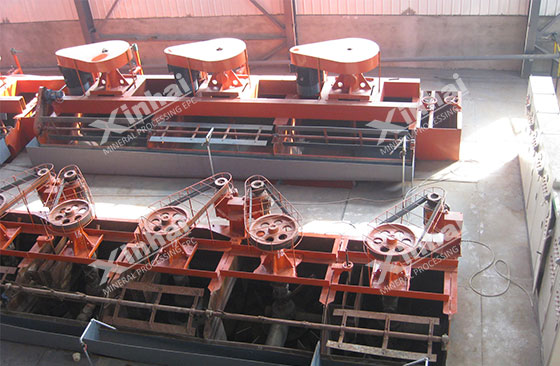
High oxidation rate molybdenum ore refers to the molybdenum ore that has been partially oxidized on the molybdenite deposit after a long period of natural erosion, and part or most of the molybdenum sulfide has been oxidized to molybdenum oxide or molybdate. Since molybdenum oxide is a natural hydrophobic mineral and there are many types of it, the physical and chemical properties of the surface of molybdenum oxide minerals vary greatly, so this type of mineral is a difficult-to-select molybdenum mineral. Most molybdenum oxide minerals have fine impregnation particles and low floatability.
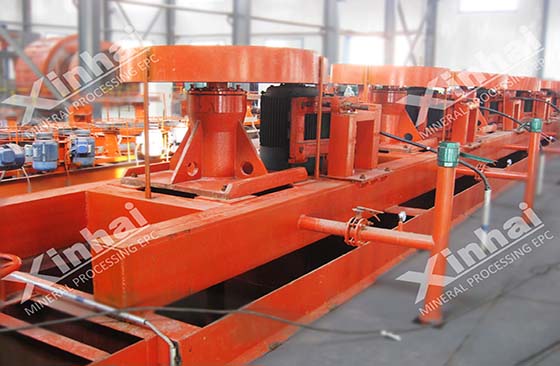
The separation of such ores is specially designed based on the characteristics of molybdenum oxide minerals. Generally, heated flotation, oil film flotation and special agents are used for activation. For finely impregnated molybdenum oxide ores, the final molybdenum recovery rate and concentrate grade can also be improved through concentrate reselection and secondary concentration. The comprehensive application of these technologies can overcome the difficulty of selecting high-oxidation molybdenum ores and achieve effective separation and extraction.
Nickel-molybdenum ore is a paragenetic ore mainly composed of nickel and molybdenum and contains a variety of rare and precious metals with recycling value such as vanadium and uranium. Nickel and molybdenum exist in the form of sulfides and coexist with pyrite in the form of ultra-fine particles. It is difficult to separate nickel and molybdenum using traditional mineral processing methods. If this ore is used alone as molybdenum ore, it will cause the loss of nickel ore, and vice versa, it will also affect the content of molybdenum ore. To treat this type of ore, a combination of flotation and metallurgy can be used. In the flotation process, pyrite is first suppressed and the reagent system is adjusted to enhance the floatability of nickel and molybdenum minerals.
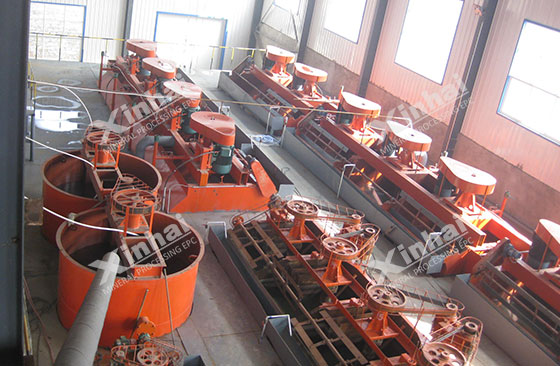
In addition, the treatment of ultrafine minerals can consider ultrafine grinding technology to improve the monomer dissociation degree of minerals and promote flotation effect. For the further separation of nickel and molybdenum, subsequent hydrometallurgical treatment, such as solvent extraction or ion exchange process, can be used to achieve effective extraction and refining of metals, thereby avoiding the mutual loss of nickel and molybdenum and ensuring the maximum recovery of each valuable metal.
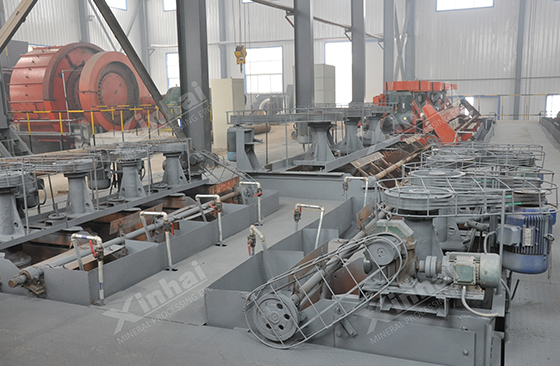
In summary, although the challenges of selecting complex molybdenum ores such as talc, high oxidation rate, and carbon-containing nickel-molybdenum ores are significant, the recovery rate and concentrate grade of molybdenum can be effectively improved by continuously optimizing the beneficiation process, such as the comprehensive application of magnetic separation, heated flotation, and ultrafine grinding. At the same time, combined with subsequent treatment methods such as hydrometallurgy, it can also achieve effective separation and comprehensive recovery of multiple metals such as nickel and molybdenum. This can not only improve the utilization efficiency of difficult-to-select molybdenum ore resources, but also provide technical support for the sustainable development of the molybdenum mining industry, help solve the problem of molybdenum resource shortage, and promote the long-term development of the entire molybdenum industry and even related fields.
To find out more about our products and solutions, please fill out the form below and one of our experts will get back to you shortly.